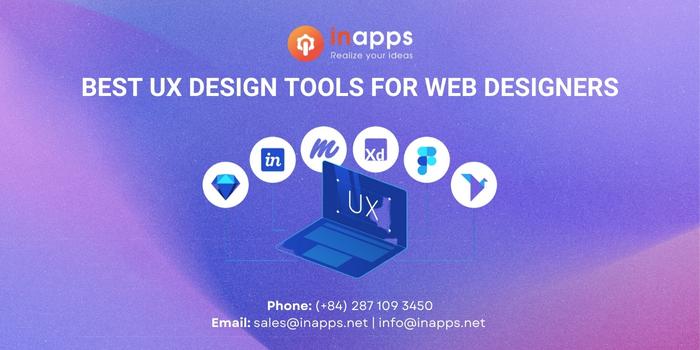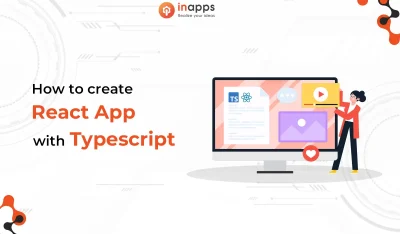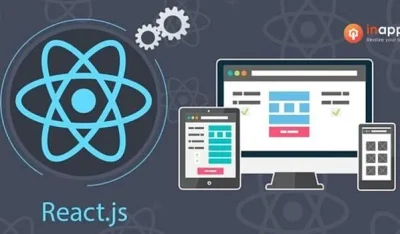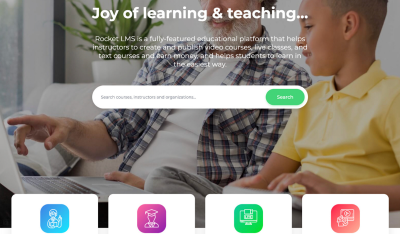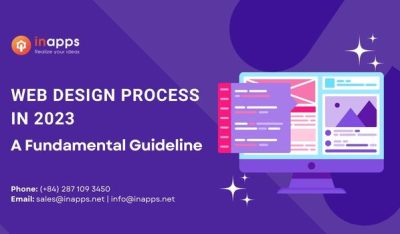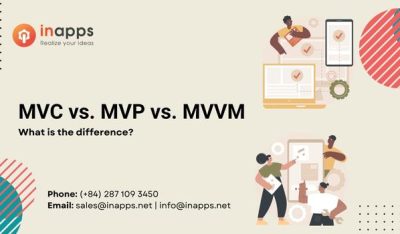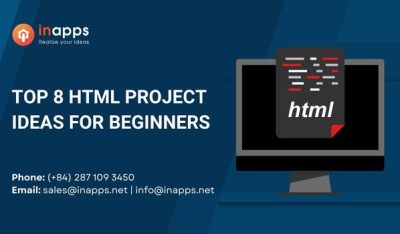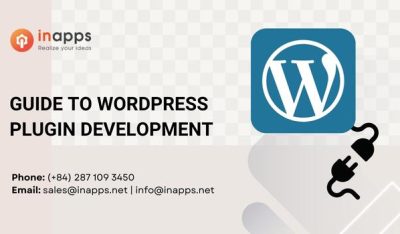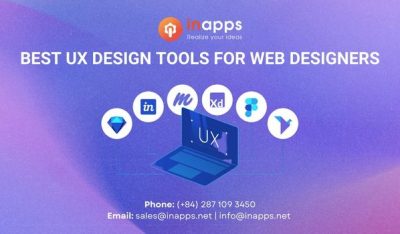- Home
- >
- Web Design & Development
- >
- Best UX Design Tools for Web Designers in 2025
Every step of the design and product development cycle is now aided by a variety of technologies, from preliminary whiteboard activities to functioning on the final piece. The accessibility and scalability of some UX design tools for web designers have never been better, making product development simpler and much more effective for everyone.
UX Design is a complex, multifaceted process that involves designing a user-friendly interface that gives customers the information they need and the actions they want. In order to be successful, UX Design decisions must be informed by evidence from multiple sources and guided by sound design principles.
Designers can use UI design tools to create realistic hi-fi wireframes, mockups, and prototypes, as well as build minimally viable products. As it is, it seems that nothing is impossible in the year 2022.
The greatest challenge in the design process is the thinking and vision of a company. Designers must create a strong concept and harness it through prototyping, testing, and refining. They need to be able to provide multiple design options and ensure they can meet all functional requirements while staying within budget.
When it comes to designing for the web, whether it be a mobile app or responsive website, there are a number of tools that can help take your design process well beyond what’s available with just the basic Adobe Suite.
In this article, we will talk about the UX design tools for web designers at great length to make some aspects of UX design tools clear to you! Let’s get started, shall we?
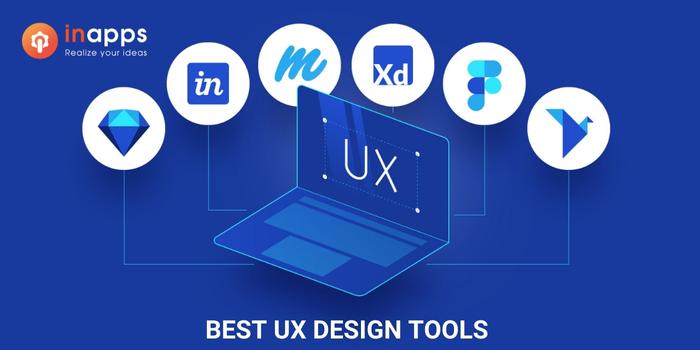
What tools do ux designers use?
Key Summary
- Overview: The article reviews top UX design tools for web designers in 2022, focusing on their features, usability, and effectiveness in creating user-friendly web experiences.
- Key UX Design Tools:
- Figma:
- Features: Cloud-based, interactive prototyping, real-time collaboration, auto-layout, and extensive plugin ecosystem.
- Pros: Intuitive, cross-platform, ideal for team workflows, free tier available.
- Cons: Requires internet connection, advanced features need paid plans.
- Use Case: Collaborative UI/UX design and high-fidelity prototyping.
- Adobe XD:
- Features: Vector-based, prototyping, animation, voice prototyping, and Adobe Creative Cloud integration.
- Pros: Seamless Adobe ecosystem, offline support, robust for interactive designs.
- Cons: Subscription-based, less collaborative than Figma.
- Use Case: Creating interactive prototypes and polished UI designs.
- Sketch:
- Features: Mac-only, vector editing, reusable components (symbols), and strong plugin support.
- Pros: Lightweight, optimized for UI/UX, large community.
- Cons: Mac-exclusive, limited real-time collaboration.
- Use Case: Designing web interfaces with reusable assets.
- Axure RP:
- Features: Advanced prototyping, dynamic content, conditional logic, and team collaboration.
- Pros: Powerful for complex, interactive prototypes, supports documentation.
- Cons: Steeper learning curve, higher cost.
- Use Case: Detailed prototypes for enterprise or complex projects.
- InVision:
- Features: Prototyping, design handoff, feedback tools, and integration with design systems.
- Pros: Great for stakeholder feedback, user testing, and design-to-dev workflows.
- Cons: Limited design capabilities, relies on imported assets.
- Use Case: Prototyping and collaboration with non-design teams.
- Balsamiq:
- Features: Low-fidelity wireframing, drag-and-drop interface, and rapid mockup creation.
- Pros: Simple, beginner-friendly, focuses on structure over aesthetics.
- Cons: Limited to wireframes, not suitable for high-fidelity designs.
- Use Case: Quick wireframes for early-stage UX planning.
- Figma:
- Comparison Criteria:
- Ease of Use: Balsamiq and Figma are beginner-friendly; Axure requires more expertise.
- Prototyping: Figma, Adobe XD, and Axure offer advanced interactivity; Balsamiq focuses on wireframes.
- Collaboration: Figma and InVision excel; Sketch and Axure have limited real-time features.
- Cost: Figma and Balsamiq offer free tiers; Adobe XD, Sketch, and Axure require subscriptions.
- Use Cases:
- Teams: Figma or InVision for collaborative UX workflows.
- Solo Designers: Adobe XD or Sketch for polished designs.
- Rapid Prototyping: Balsamiq for quick wireframes, Axure for complex interactions.
- Challenges:
- Choosing tools based on project complexity and team size.
- Managing subscription costs for multiple tools.
- Ensuring compatibility with developer handoff processes.
What are UX design tools?
UX design tools are concerned with the user and how they will interact with the information. These tools can aid in the organization of information architecture as well as the flow of a user through the journey.
Because this is a more conceptual approach, UX tools assist a designer in painting a wider context of how content and structure will affect the user experience.
These tools can help designers create layouts and prototypes, structure information, and determine how a user will flow through the product. There are many tools available in the UX/UI designer space, catering to a wide range of users from beginners to experts.
What tools do UX designers use?
The UX Design tools list for 2022 is full of amazing web design tools that will improve the entire product design process, including sketching, prototyping, and user research.
Whether you’re a freelancer, independent designer, agency owner, or industry giant, there’s no doubt that these UX design tools can make your work easier and more efficient.
Adobe XD
Adobe XDIt is a user interface design platform for developing product prototypes, mobile applications, and websites. It gives designers the means they need to make fully functional prototypes, such as workflows, element formation, animated transitions, as well as other dynamic components.

What programs do UX designers use?
One of the advantages of adopting a product from an amazing package like Adobe is that they all work together seamlessly. While some tools, like Photoshop, are on the expensive side, larger businesses will find the Creative Cloud package appealing because numerous applications, such as Illustrator and InDesign, are available together.
Balsamiq
Balsamiq has long been regarded as the industry’s top wireframing tool, and the reason is pretty much known. Because of the hand-drawn layout, UX/UI designers have to keep their wireframes as low-fidelity as possible. This enables them to concentrate solely on functionality and user flow while minimizing visual elements.

Even for a UI designer with no technical experience, this design tool is popular for being one of the simplest to get started with.
It’s easy enough for people to rapidly make mockups while also giving sufficient icons and tools for designers to put their ideas on the web without sacrificing quality. It’s also favored among small teams and start-up businesses because of its low cost.
InVision
InVision provides designers with all of the UI design tools they need to develop fully completed and functional prototypes with dynamic features and animations because of its entire set of applications.

They make the interaction simple, too, with collaborative options that enable developers to publish their work as they build it, get comments, and make documented modifications at every stage.
The digital whiteboard enables teammates to put their suggestions out there, communicate, and gain that ever so important sign-off before proceeding ahead.
Framer X
Framer X has progressed since its inception as a code-only prototype tool. It now has a number of UI design tools for creating functional prototypes and usability testing. It’s React compatibility renders it excellent for UI designers who want to remain at the forefront of the latest web design trends.
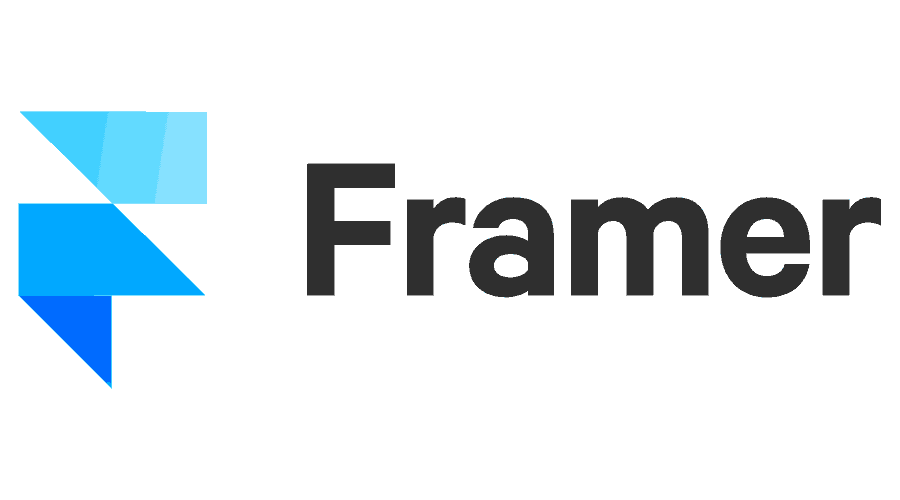
Framer X even has a plugin store with UI modules for connecting social media platforms like Snapchat and Twitter, players for embedding a range of media, grids, and other essential elements that can be simply incorporated for UI designers. It’s an excellent interface design tool with an easy learning process.
Figma
Figma is among the most widely used design programs and also a popular UX design tool for web designers in the market today.
It comes with a cloud-based design tool for developing and creating prototypes with beautiful design elements. Wireframes and other products such as mood boards can also be created with the software. The structure is expansive, allowing numerous revisions of a project to be put on the same page and easily compared.
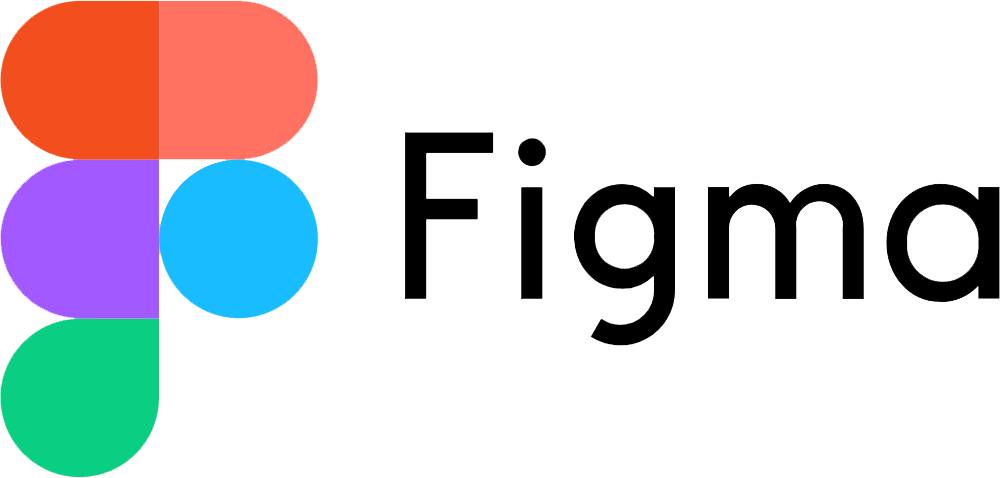
What software tools do UX designers use?
Figma’s collaborative features, which enable numerous users to make revisions to a design at the same time without having to download files locally, are one of its biggest selling points. Figma’s browser feature allows it to be used on a variety of operating systems. Finally, Figma works well with other tools like Maze, Zeplin, and more.
Marvel
Marvel is a one-stop-shop UX design tool for web designers that includes features for everything from design and wireframing to prototyping and user testing. Because the software is so easy to use, it’s ideal for swiftly creating prototypes and building basic, efficient user interfaces.

While Marvel provides tools for every stage of the design process, prototyping is its central concern. Users can use motions, import designs, integrate screen elements, and do whatever else is needed to quickly develop working prototypes.
While it isn’t as complicated as some of the other UX design tools in this article, it is a great alternative for inexperienced designers and developers who want to get up to speed quickly.
Origami Studio
Origami Studio is way more advanced than InVison, which is more user-friendly for beginners. Origami Studio has a lot to offer people that need a more advanced prototype tool for their design system.
This platform includes all of the tools needed to create comprehensive prototypes that are backed by a powerful patch editor, allowing designers to incorporate additional features. Prototypes take on the appearance and functionality of a genuine program or website.

Sketch and Origami Studio work well together. If you’re functioning in conjunction with Sketch, you’ll be able to bring in layers and copy and paste them without any problems.
Axure
Axure is a tool for developing wireframes and lo-fi prototypes that is simple to use without affecting quality & functionality. Users can use the software to swiftly develop prototypes with data-driven interactions without having to write any code.

Axure makes it especially simple to add elements like dynamic panels, animations, and graphic interactions that would otherwise take ages to put in place.
Axure, like the others on our list, allows numerous designers to collaborate on a single project file at the same time. Although its high-end pricing renders it more enticing to businesses, the final outcome is the speedy development of well-functioning prototypes.
UxPin
UXPin provides software designers with tools to take their designs from concept to completion, with a strong emphasis on the final result. Its prototypes are by far the most complicated, culminating in products that are just a smidgeon away from being fully functional.
Furthermore, even when interactions, animations, and other features are used, this final outcome may be produced without the requirement for designers to understand how to code. Even when creating high-fidelity prototypes, the tool’s drag-and-drop capability makes it incredibly simple to use.
Users can import their designs from other programs and seamlessly merge them. As a result, while adding useful functionality to static pictures, layers are not lost.
FlowMapp
FlowMapp provides a variety of UI/UX design tools and means to communicate, collaborate, and plan content. Focusing on UX tools, it uses a flowchart tool that helps organize the UI and UX of apps, digital services, and websites, as well as providing user research functionality.

The sitemap tool is extremely simple to use, allowing users to share and develop distinct pages, each with its own content and purpose. Its package provides other features, including the Personas function, which allows customers to create buyer personas. This makes it a good choice for smaller teams, as it helps to keep everyone on the same path.
TreeJack
A design’s visual elements are crucial, but it’s nothing more than an empty shell without strong content. It’s not enough to have good content; it also needs to be organized in a way that makes it as accessible as possible. This is where the concept of information architecture comes into play.

Treejack is a company that focuses on information architecture. It allows you to test a website’s tree structure with actual users. It then delivers results that indicate a user’s path and navigation through the content, providing you with useful information for editing and tweaking the content arrangement.
Proto.io
Proto.io is another excellent tool that allows UX/UI designers to produce high-quality prototypes while also being user-friendly. This is a difficult mix to carry out, but Proto.io pulls it off wonderfully, resulting in final projects that function and feel complete.

It’s especially popular among students because of its simple learning process and extensive range of tools for building up interactions within the prototype. Designers can plan, build, and even test hi-fi prototypes with Proto.io, which also allows for team communication throughout the procedure.
In A Nutshell
We have so far covered only a limited number of UX design tools for web designersin this article. There are a few things to keep in mind while selecting your tools. First and foremost, what types of projects will your emphasis be on?
Do you require tools that can be used to create websites, mobile applications, or both? Of course, you should double-check that the tools you select are appropriate with the computer or system you’re using. Also, did you know that emotions play an important role in UX Design?
Along with conducting extensive research, it’s also a good idea to speak with seasoned UI designers to learn about the tools they suggest. However, the one and the only way to determine whether tools are right for you is to try them out, so register for as many free trials as you can!
Most products come with their own guidelines and instructions, and video tutorials are a terrific way of learning the fundamentals. Experiment around with a few different apps and you’ll quickly figure out which functionality and user interfaces you like.
Keep reading InApps to stay updated on your tech game!
FAQ’s
How to choose the best Ux design tools?
One must choose the best design tools based on their requirements from any project.
What is the important feature of any Ux design tool?
UX Design is a complex, multifaceted process that involves designing a user-friendly interface that gives customers the information they need and the actions they want. In order to be successful, UX Design decisions must be informed by evidence from multiple sources and guided by sound design principles.
How can designers use these tools to create a better experience?
Designers can use UI design tools to create realistic hi-fi wireframes, mockups, and prototypes, as well as build minimally viable products.
List of Keywords users find our article on Google
[sociallocker id=”2721″]
| formation figma |
| figma formation |
| ux research freelancer |
| adobe xd |
| ux design |
| ux design tools |
| ux flowchart |
| proto tools |
| proto io |
| adobe xd team |
| website structure design tool |
| good website design |
| best website design |
| food service ux/ui |
| ui designer interview questions |
| independent designers |
| maze vs usertesting |
| framer jobs |
| marvel app design |
| figma mockups |
| building a design system in figma |
| adobe xd course |
| top web design and development companies |
| weable technology |
| used design |
| the best ux design tools |
| flowmapp |
| hire adobe indesign experts |
| best ux software |
| balsamiq cloud |
| indesign flowchart |
| balsamiq reviews |
| ux case study |
| best framer tutorials |
| adobe wireframes |
| zeplin alternative |
| hire uxpin designers |
| “framer x” |
| hire adobe xd designers |
| indesign portfolio template |
| adobe xd templates |
| adobe xd template |
| adobe xd wireframes |
| framer vs figma |
| best ux tools 2021 |
| material design figma |
| best cases ux design |
| ux case studies |
| photoshop interview questions |
| adobe xd invision plugin |
| figma tool tutorial |
| uxpin |
| axure vs figma |
| formation photoshop elements |
| ux designer |
| top ux architect linkedin |
| best ux design tool |
| adobe xd responsive design |
| origami studio for ux design online courses |
| balsamiq pricing |
| best ux design tools |
| marvel vs invision |
| figma user testing |
| proto tools review |
| proto tool set |
| best web designers near me |
| axure vs invision |
| freelance uxpin designers |
| beginners origami |
| adobe xd to website |
| snapchat backend architecture |
| prototyping in figma |
| zeplin pricing |
| ux design principles |
| principles of ux design |
| best web design |
| user experience design principles |
| ux principles |
| “framer web” |
| “uxpin” |
| wawa interview questions |
| phunware careers |
| hire axure experts |
| protoio |
| fidelity interview questions |
| indesign portfolio template free |
| portfolio template indesign |
| best interaction design tools |
| treejack alternatives |
| best ux design software |
| user experience design tools |
| adobe xd components |
| proto tools set |
| framer x |
| hire balsamiq designers |
| import xd to figma |
| balsamiq alternative |
| balsamiq wireframes |
| adobe xd sitemap |
| axure share |
| net backend developer interview questions |
| learn adobe xd |
| invision design system manager |
| figma to react |
| origami tutorial |
| how to prototype in figma |
| building a design system with figma |
| is figma easy to learn |
| best figma tutorials |
| how to do user research |
| invision design studio |
| figma resources |
| ux portfolio website |
| xd prototype |
| user research tools |
| collaborative design system |
| principles of designing a memorable user experience |
| touch screen interface design software |
| ux |
| “axure” |
| hire proto.io designers |
| freelance axure experts |
| proto io templates |
| proto io design |
| adobe xd website templates |
| proto-io |
| uxpin design |
| axure responsive |
| architecture portfolio layout indesign |
| architecture portfolio indesign template |
| free indesign portfolio template |
| best tools for web designers |
| best ui ux tools 2020 |
| freelance balsamiq designers |
| adobe xd ideas |
| axure api |
| proto.io for ux design online courses |
| adobe xd high fidelity |
| ux design interview whiteboard challenge |
| uxpin reviews |
| mobile app design adobe xd |
| usertesting figma |
| axure pricing |
| proto labs jobs |
| ecommerce xd template |
| adobe xd free trial |
| portfolio moodboard |
| dna origami template |
| ui design with adobe xd |
| axure app |
| figma prototype navigation |
| social media marketing agency ho chi minh |
| best ux tools |
| axure alternative |
| figma material design |
| create prototype in figma |
| treejack pricing |
| graphic design process flowchart |
| invision design system |
| material design adobe xd |
| ui ux adobe xd |
| proto professional tools |
| hire mvvm developers |
| ux design adobe xd |
| hire invision experts |
| invision sketch plugin |
| zeplin sketch plugin |
| ux designer vietnam |
| adobe interview questions |
| adobe interview questions for experienced |
| figma flowchart |
| origami delivery menu |
| proto hand tools |
| ux design awards |
| ux designer freelancer |
| axure wireframing |
| ui ux consultant rates |
| figma components |
| ux design ideas |
| how to start learning ux design |
| adobe xd prototypes |
| download zeplin plugin for sketch |
| hire fintech designer |
| blockchain ux design agency |
| speedy tool hire |
| best ui ux portfolio websites |
| figma prototype |
| adobe xd plugin |
| figma vs invision |
| ux designer interview questions |
| figma design system |
| website design system |
| webdesigners |
| ux design agency |
| ux tools 2022 |
| freelance proto io designers |
| ui ux designer linkedin profile |
| “adobe xd” |
| proto io pricing |
| figma help |
| hire proto io designer |
| hire zeplin freelancer |
| adobe xd publish prototype |
| adobe xd web design templates |
| zeplin adobe xd |
| mapp cloud reviews |
| adobe xd plug-ins: the 2021 must-have list online courses |
| design portfolio template indesign |
| adobe xd zeplin windows |
| adobe xd user input |
| architecture portfolio template indesign |
| uxpin: developer workflow online courses |
| proto i o |
| adobe xd design specs |
| free axure templates |
| hire adobe xd developer |
| developing a design system with uxpin online courses |
| hire invision studio designers |
| uxpin alternative |
| mobile app ui design in adobe xd |
| adobe xd react |
| hire adobe indesign developer |
| publish adobe xd website |
| useful origami |
| business development representative interview questions |
| ux workshop packages |
| balsamiq free alternative |
| zeplin figma |
| react native sound |
| zeplin api |
| indesign website templates |
| plugin zeplin photoshop |
| “studio-webesign.com” |
| indesign free trial |
| indesign to figma |
| maze usability test |
| test figma prototype |
| snapchat story template |
| ui ux designer vietnam |
| figma app template |
| figma website template |
| ux developer tools |
| zeplin io |
| adobe experience manager vs wordpress |
| facebook wireframe |
| prototype adobe xd |
| axure cloud |
| company profile template figma |
| top web designers near me |
| what is uxpin |
| adobe xd figma import |
| axure xd |
| how to organize figma files |
| indesign portfolio |
| figma website templates |
| axure vs adobe xd |
| figma mobile browser template |
| wireframe xd |
| adobe indesign plugin development |
| invision studio tutorials |
| adobe for ui design |
| adobe xd prototype |
| balsamiq price |
| marvel adobe xd |
| adobe dynamic media |
| adobe xd developer |
| hire figma designers |
| hire material ui developer |
| axure figma |
| what is adobe xd |
| adobe xd beginner |
| design in adobe xd |
| figma education |
| how to make prototype in adobe xd |
| adobe responsive design |
| adobe success story |
| illustrator flowchart |
| plan your fintech webdesign project |
| web design ho chi minh city |
| adobe xd vs invision |
| figma to invision |
| figma user flow template |
| web design el segundo |
| web designer vietnam |
| adobexd |
| origami beginners |
| react native adobe xd |
| user interface design jobs |
| adobe xd to wordpress service |
| how much does a ux designer make |
| how to create prototype in xd |
| onestop student services outsourcing |
| adobe xd for websites |
| figma invision |
| free figma website templates |
| design system course figma |
| material ui adobe xd |
| patch mockups |
| uxpin for ux design online courses |
| best ui ux portfolio |
| data merge indesign |
| figma video tutorials |
| ux portfolio case study |
| invision sketch course |
| touristik career |
| zeplin app |
| ui ux portfolio website |
| user flow figma |
| ux meet up |
| balsamiq |
| best adobe xd plugins |
| mvvm interview questions |
| figma updates |
| invision templates |
| framer for ux design online courses |
| figma testing |
| adobe xd online |
| product designer interview questions |
| adobe xd course free |
| figma advanced prototyping |
| invision vs figma |
| product design interview questions |
| ui ux designer portfolio website |
| how to make a ux portfolio |
| how to review a ux design portfolio |
| paste in place indesign |
| interview questions for ui developer |
| how much does a visual designer make |
| invision for ux design online courses |
| mvp checklist |
| ux ui portfolio |
| invision prototype |
| ui & ux designer |
| ux research tools |
| amazing web design |
| hire website designer freelancer |
| ux & ui design near me |
| web developer portfolio |
| web design ux |
| design system platform |
| principles of user experience |
| user interface design principles |
| web designers portfolio |
| best web design and development |
| web designers |
| ux design firm |
| web design services |
| react native app development company |
| web design company |
| web designing services |
| best web design 2022 |
| ux design tools 2022 |
| framer linkedin |
| “easy user test” |
| adobe xd feature request |
| import indesign to figma |
| linkedin ux design |
| you have been given an adobe photoshop file and need to create a prototype from the design in adobe xd—maintaining all the layers. how do you do this? |
| facebook adobe xd |
| ux case study template xd |
| zeplin linkedin |
| axure website template |
| origami studio pricing |
| axure functions |
| facebook origami |
| balsamiq vs axure |
| adobe xd to zeplin |
| free indesign templates portfolio |
| web user interface design tools |
| zeplin jobs |
| hire figma developers |
| uxpin tutorial |
| axure vs balsamiq |
| web design template adobe xd |
| website templates adobe xd |
| adobe xd profile |
| architecture portfolio template indesign free |
| portfolio indesign template |
| adobe xd zeplin plugin |
| hand tool in adobe xd |
| web design tools 2022 |
| adobe xd interview questions |
| axure website template free |
| figma linkedin |
| figma vs proto.io |
| indesign flowchart template free |
| free adobe xd website templates |
| portfolio template indesign free |
| top ux design software |
| twitter ux designer |
| ux tools for web design |
| adobe xd templates mobile |
| axure tutorials |
| indesign templates architecture |
| saas recruitment process outsourcing |
| ux tools list |
| web design xd templates |
| adobe product manager interview questions |
| best app for ux design |
| figma ecommerce website template |
| adobe xd capabilities |
| e commerce xd template |
| figma profile template |
| figma saas templates |
| marvel origami step by step |
| portfolio layout indesign |
| balsamiq com |
| free indesign portfolio templates |
| zeplin to figma |
| adobe xd template mobile app |
| framer figma |
| website xd template |
| graphic design portfolio template indesign free download |
| indesign business plan template |
| template adobe xd |
| adobe xd interactions |
| adobe xd logo template |
| free template indesign portfolio |
| inception designs |
| indesign portfolio template free download |
| marvel vs figma |
| xd design specs |
| adobe xd mobile app download |
| e commerce adobe xd |
| how to prototype in adobe xd |
| adobe xd free ui |
| indesign moodboard |
| indesign trial download |
| mobile app adobe xd |
| “distinct design company” |
| adobe xd share prototype |
| email template indesign |
| figma vs framer |
| origami voor beginners |
| uxpin free |
| figma social media app template |
| paste in place figma |
| graphic design portfolio template indesign |
| hand drawn design elements |
| illustrator mobile app template |
| ui ux design vietnam |
| “prototypes” |
| adobe xd icon templates |
| adobe xd tutorial |
| axure review |
| figma status |
| indesign menu template |
| what is framer x |
| adobe xd projects |
| figma vs marvel |
| framer io |
| material design for figma |
| media central ux |
| zeplin vs xd |
| balsamiq mockups free alternative |
| figma free mockups |
| figma import indesign |
| figma update |
| framer x react |
| website design templates illustrator |
| adobe xd invision integration |
| amazing indesign templates |
| figma interactions |
| figma mobile template |
| free website templates adobe xd |
| linkedin front end interview questions |
| redfox recruitment |
| ux beginner portfolio |
| xd responsive design |
| adobe package design |
| adobe xd email design |
| adobe xd web design download |
| adobe xe |
| business development rep interview questions |
| figma copy interactions |
| marvel wireframes |
| mobile app design ideas |
| mockup on figma |
| one drop designs |
| user interface design case study |
| adobe product manager interview |
| adobe xd sharing prototypes |
| alternative balsamiq |
| best ux software 2021 |
| designerrs ui ux design lab |
| figma web app template |
| good ux designer review |
| hire figma designer |
| how long does it take to learn figma |
| responsive web design in figma |
| adobe xd multiple users |
| adobe xd responsive |
| axure free alternative |
| figma mobile app template |
| figma prototype interactions |
| figma responsive web design |
| framer x vs figma |
| hand tool adobe xd |
| indesign layout ideas |
| invisionapp tutorial |
| responsive web design adobe xd |
| web interface design tools |
| adobe core components |
| ecommerce figma template |
| ecommerce figma template free |
| facebook figma |
| import adobe xd to figma |
| marvel app prototype |
| merge indesign files |
| proto tools near me |
| sketch and invision: designing a sign-up process online courses |
| tutorial invision |
| twitter system design interview questions |
| ui ux design agency vietnam |
| website templates indesign |
| wireframes xd |
| framer for web |
| indesign architecture portfolio |
| indesign website template |
| marvel app icons |
| page transitions indesign |
| ui designer freelancer |
| ux design case study template |
| ux designer tools |
| what is prototype in adobe xd |
| adobe xd designers |
| best ux design tools 2021 |
| figma bring to front |
| framer ui |
| learn invision studio |
| adobe systems interview process |
| adobe xd share for development |
| adobe xd website design |
| chi ux |
| figma checklist |
| figma mobile app |
| figma prototype full screen |
| figma templates web |
| hire conceptual designers |
| how to make prototype in xd |
| how to share adobe xd prototype |
| how to transition from architect to ux designer |
| mvc marvel |
| proto tech group |
| react native sketch |
| ui design tools for web applications |
| ui ux design tools |
| user experience designer jobs |
| ux case study interview |
| ux ui design vietnam |
| website ux case study |
| adobe phone interview questions |
| adobe proto |
| adobe xd elements |
| axure selection group |
| balsamic wireframes |
| best figma templates |
| concept selection (software aided) |
| custom figma |
| e-commerce manager interview questions |
| framer components |
| framer for hire |
| framer ux |
| framer web |
| from adobe xd to website |
| game flowchart template |
| prototyping in adobe xd |
| react-native-sound |
| website layout figma |
| adobe illustrator cool tutorials |
| adobe mobile app design |
| adobe xd interface |
| architecture portfolio design templates |
| fidelity ux designer |
| marvel wireframe |
| material ui xd |
| outsource real estate image editing vietnam |
| ui ux vs front end developer |
| uxpin pricing |
| website design forefront web |
| wordpress vs adobe experience manager |
| adobe xd for ui design |
| adobe xd review |
| adobe xd web app |
| can you make an app with adobe xd |
| dna template origami |
| download invision studio for windows |
| ecommerce product manager interview questions |
| figma react |
| figma responsive website |
| inception effect photoshop |
| instructions origami |
| marvel design platform |
| portfolio template figma |
| proto tool review |
| responsive design adobe xd |
| twitter ux |
| ui design in adobe xd |
| zeplin logo |
| “io core procedure” |
| adobe xd development |
| adobe xd for designers online courses |
| adobe xd material design |
| adobe xd sitemap plugin |
| axure animation |
| axure course |
| design systems invision |
| figma ecommerce template |
| figma portfolio template |
| figma to axure |
| figma tutorials 2022 |
| frame figma |
| how to make a prototype in adobe xd |
| how to merge layers in illustrator 2020 |
| indesign user group |
| maze ux |
| origami instructions easy |
| picture framer jobs |
| portfolio design layout |
| wireframe marvel |
| adobe experience manager core components |
| adobe photoshop to xd: web design process online courses |
| adobe xd web prototype |
| figma to indesign |
| framer vs framer |
| grids figma |
| hire invision designers |
| import sketch file to figma |
| maze prototype testing |
| the best ux tools |
| ux design process case study |
| web ux design tools |
| zeplin sketch |
| adobe cycle designer |
| adobe experience manager react |
| axure droplist |
| fidelity trustpilot |
| figma portfolio design |
| figma product page template |
| figma templates |
| free trial indesign |
| hire adobe creative suite developer |
| how to organize figma |
| invision app design |
| adobe xd react native |
| adobe xd vs invision studio |
| axure tutorial |
| best ux ui tools |
| figma material ui |
| getting started with adobe xd |
| hire invision developer |
| invision studio vs sketch |
| making icons in figma |
| material icons for adobe xd |
| mobile app product manager interview questions |
| saas website design freelancer |
| zeplin illustrator plugin |
| adobe xd creative cloud |
| adobe xd to |
| beginner easy origami animals |
| case ux design |
| dna origami design |
| facebook system design interview questions |
| figma mobile app design |
| guided search ux |
| interaction design icon |
| invision studio vs figma |
| origami easy step by step |
| origami logos |
| product owner interview questions |
| social media app design inspiration |
| ux case studies portfolio |
| xd ui design |
| adobe indesign questions |
| adobe xd alternative online |
| animate sketch prototype |
| app zeplin |
| best icon plugin for xd |
| facebook product design interview |
| how to design responsive website in illustrator |
| indesign actions |
| indesign layout templates |
| indesign page transitions |
| interview questions ux researcher |
| material design xd |
| material icons adobe xd |
| moodboard figma |
| qc animations |
| redfox web design |
| ux ui designer stage |
| web interface designer jobs |
| wireframe axure |
| xd writing plugin |
| adobe cd |
| adobe customer success stories |
| adobe xd for beginners |
| axure prototype |
| balsamiq features |
| best ui ux software |
| best ux case studies |
| design system in adobe xd |
| easy origami step by step |
| framer plugins |
| framer prototype |
| framer studio |
| game sound design jobs |
| indesign share for review |
| marvel app sketch |
| origami tree easy |
| proto app |
| react native freelancer |
| what should be in a ux portfolio |
| adobe ux design |
| adobe xd icons |
| adobe xd wireframe free download |
| animations in figma |
| architecture portfolio template |
| axure design |
| best ui design portfolio |
| copy paste figma |
| e-commerce manager job interview questions |
| element to figma |
| figma interaction |
| freelance zeplin designers |
| freelancer ux design |
| how much do ui designers make |
| how much do ux ui designers make |
| indesign graphic frame |
| indesign paste on all pages |
| interview questions for client partner |
| is adobe xd completely free |
| material design icons adobe xd |
| must have figma plugins |
| prototyping on figma |
| react native re animated |
| top ux designer portfolio |
| ui ux designer interview questions |
| ui ux freelancer |
| ui/ux portfolio |
| ux case study template |
| ux pin |
| ux studio |
| wireframing indesign |
| adobe experience design |
| adobe xd mobile prototype |
| axure ui design |
| best ui designer portfolio |
| best ui designers |
| best ux design portfolio websites |
| best ux portfolio websites |
| drag and drop react native |
| editor x vs figma |
| food order ui design |
| how much does ux designer make |
| how to build a ux portfolio |
| how to make origami easy |
| indesign data merge not working |
| interview questions for ui/ux designer |
| invision vs zeplin |
| maze user testing |
| mobile game ui design |
| publish figma |
| sketch plugin zeplin |
| ui design case studies |
| ui ux portfolio websites |
| update indesign 2021 |
| user research ux design |
| adobe suite web design |
| adobe xd alternative windows |
| adobe xd invision |
| apps made with adobe xd |
| axure |
| axure wireframes |
| build a ux portfolio |
| download sketch file from invision |
| ecommerce qa interview questions |
| figma free templates |
| figma publish website |
| figma story |
| hire fintech designers |
| how to create a ui ux portfolio |
| indesign elements |
| invision studio review |
| learn figma for ux/ui design |
| material design system figma |
| mobile design system figma |
| moodboard ui |
| onestop digital trustpilot |
| react native ecommerce template |
| responsive design in xd |
| treejack |
| ux design tool |
| ux/ui freelancer |
| zeplin to wordpress |
| adobe experience design review |
| adobe wireframing |
| adobe xd alternative |
| adobe xd prototype plugin |
| adobe xd to wordpress |
| animated mock ups |
| are proto tools good |
| axure collaboration |
| best adobe xd course |
| best axure courses |
| best ux designers |
| cool ux design |
| design system invision |
| figma import sketch |
| figma social media icons |
| hire figma developer |
| how to become a ux designer with no experience |
| how to create a ux design portfolio |
| indesign dynamic content |
| interview questions for ui ux designer |
| invision photoshop plugin |
| invision studio alternative |
| logo in figma |
| merging indesign files |
| mobile qa interview questions |
| offshore painting jobs |
| portfolio in indesign |
| tree wireframe |
| ux/ui portfolio |
| vietnam software testing and qa companies |
| adobe xd online courses |
| architecture plan photoshop |
| balsamiq mockups vs figma |
| balsamiq online free |
| ecommerce manager interview questions |
| indesign data merge |
| invision wireframe |
| no data found ui design |
| photoshop merge paths |
| react dnd |
| sitemap vs user flow |
| telegram ui ux review |
| ui adobe xd |
| ux design freelance |
| ux framework tools |
| adbode xd |
| how much do ux designers make? |
| paste in same place indesign |
| web design services near me |
| ux design labs |
| ux ui designer |
| best web designers |
| ui designers |
| user testing |
| portfolio template web developer |
| best web design company |
| ux/ui design |
| web design system |
| 7 ux principles |
| ui ux designer |
| web design portfolio |
| top best website design |
| ux ui design |
| web designer portfolio site |
| friendly-web-design.com |
| how to create a portfolio for web developer |
| ui designer |
| portfolio website design |
| best app for web design |
| ux design course |
| best ui ux design agency |
| ux design firms |
| web design tools |
| ui ux design agency |
| ux firm |
| best website designers |
| design thinking prototype |
| best web design agency |
| ux design in healthcare |
| ai ux design |
| good web design |
| top ui ux design company |
| ui/ux design studio |
| prototype design software |
| web designers near me |
| user experience principles |
| professional web designers near me |
| webdesigntrends |
| how to become a web designer |
| mobile app design process |
| responsive web designer |
| best app for web development |
| leading web design agency |
| ux design company |
| best web design services |
| mobile development agency |
| website design and development companies |
| web design and development services |
| web design and development service |
| hire dedicated developers |
| hire dedicated react native developer |
| web development company |
| web design & development services |
| web design & development company |
| ecommerce web design agency |
| web design team |
| website design & development services |
| website design and development company |
| web development agency |
| custom web design services |
[/sociallocker]
Let’s create the next big thing together!
Coming together is a beginning. Keeping together is progress. Working together is success.




